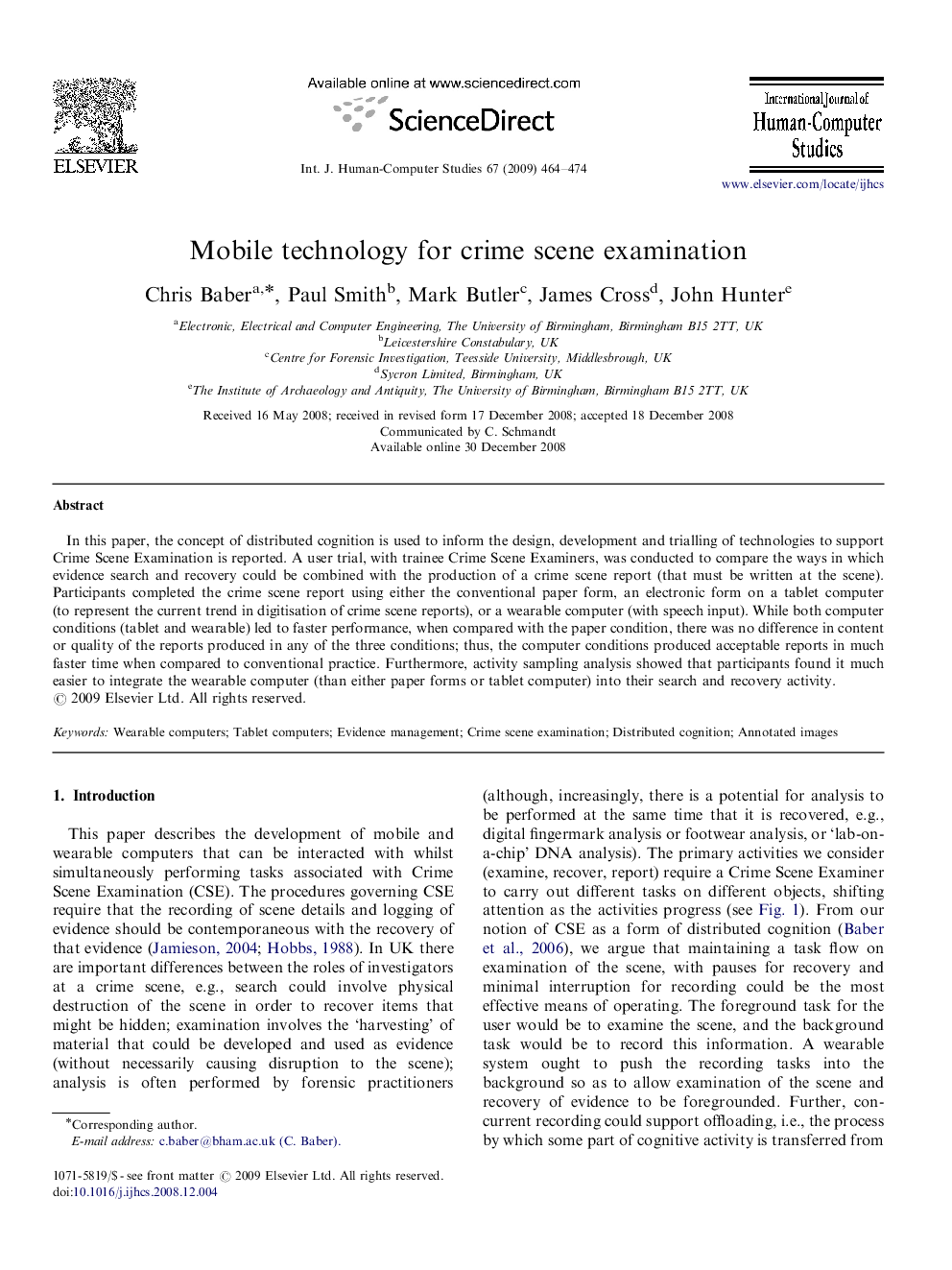| Article ID | Journal | Published Year | Pages | File Type |
|---|---|---|---|---|
| 400756 | International Journal of Human-Computer Studies | 2009 | 11 Pages |
In this paper, the concept of distributed cognition is used to inform the design, development and trialling of technologies to support Crime Scene Examination is reported. A user trial, with trainee Crime Scene Examiners, was conducted to compare the ways in which evidence search and recovery could be combined with the production of a crime scene report (that must be written at the scene). Participants completed the crime scene report using either the conventional paper form, an electronic form on a tablet computer (to represent the current trend in digitisation of crime scene reports), or a wearable computer (with speech input). While both computer conditions (tablet and wearable) led to faster performance, when compared with the paper condition, there was no difference in content or quality of the reports produced in any of the three conditions; thus, the computer conditions produced acceptable reports in much faster time when compared to conventional practice. Furthermore, activity sampling analysis showed that participants found it much easier to integrate the wearable computer (than either paper forms or tablet computer) into their search and recovery activity.
